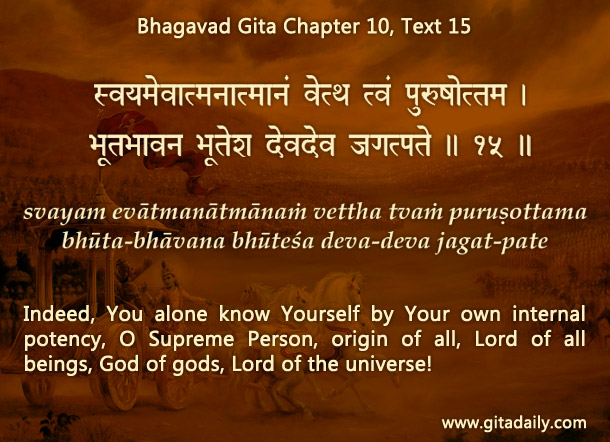Westerners who hear about the many gods within the Vedic pantheon often equate this conception with the polytheism widespread in the Greco-Roman culture that was displaced by the Abrahamic religions with their aggressive monotheism.
Greco-Roman polytheism was conventionally conceived as comprising various gods who were independent lords of their own areas of jurisdiction. These gods would often fight among themselves to expand their turf. This conception of cosmic administration is like a continent’s administration, wherein each country has its own separate head of state.
But the Vedic vision of divinity is significantly different from both Greco-Roman polytheism and Abrahamic monotheism – it is a distinctive multi-level monotheism. Consider, for example, the Bhagavad-gita (10.15) declaration that Krishna is the God of gods. This implies that he is not one among many gods, but is the One above the many gods. This verse reiterates Krishna’s supremacy with four more epithets: he is the Supreme Person, the source of all existence, the controller of all existence and the Lord of the universe.
Continuing the geographical metaphor, the Gita’s vision of cosmic administration can be likened to a country’s administration, wherein different cabinet ministers have their own portfolios, but are subordinate to the prime minister, who is the sovereign head of state. Similar is the relationship between the gods, who are departmental administrators, and Krishna, who is the overlord of everything, being the God of gods.
Appreciating the difference between Greco-Roman polytheism and Vedic multi-level monotheism is not arcane theologizing. Comprehending Krishna’s supremacy is foundational for adopting the focused devotion that is the Gita’s conclusive call (18.66). We become convinced to devote ourselves wholeheartedly to Krishna when we understand that he alone can liberate us from material existence. Once we let such enlightened devotion power us, we march steadily towards life and love eternal.
To know more about this verse, please click on the image
Explanation of article:
Podcast:


Leave A Comment